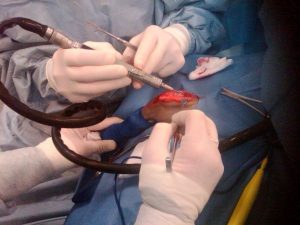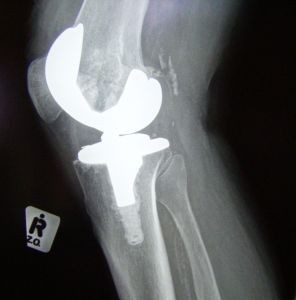In the United States alone, more than 600,000 people undergo a single or bilateral total knee replacement operation each year. This incredible figure makes total knee replacement the most common surgical procedure performed each year. Next in line is the total hip replacement operation, of which there are between 300,000 and 400,000 performed annually in the U.S. Between the two procedures, it is clear to see that joint replacement (arthroplasty) is big business.
 While the vast majority of operations go well, there is always a risk of infection following a major surgery. Infection can destroy the artificial knee and cause a patient to need an above the knee amputation. It is important to understand that no matter how much effort a hospital puts into sterilizing everything and making sure there are no germs present in the operating room, infections, including staff infections, are going to happen, and it is not necessarily anyone’s fault. Continue reading
While the vast majority of operations go well, there is always a risk of infection following a major surgery. Infection can destroy the artificial knee and cause a patient to need an above the knee amputation. It is important to understand that no matter how much effort a hospital puts into sterilizing everything and making sure there are no germs present in the operating room, infections, including staff infections, are going to happen, and it is not necessarily anyone’s fault. Continue reading
 Product Liability Lawyer Blog
Product Liability Lawyer Blog




